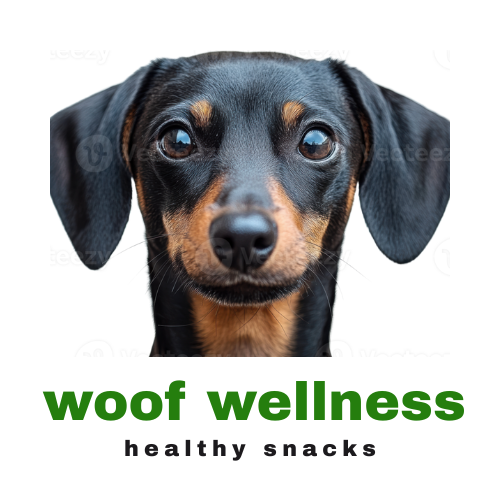Protein’s kind of a big deal in your furry friend’s diet. It packs a punch for building those strong muscles, keeping their energy up, and ensuring they’re ready to play fetch at a moment’s notice. Just like us, dogs thrive on good nutrition to support overall health, and protein plays a starring role.
So, what’s in a high protein dog snack? Think of it as a mini meal that’s loaded with essential amino acids and nutrients, but in a tasty treat form your pup will wag their tail for. It’s all about packing in more protein without going overboard.
High protein snacks do wonders. They boost muscle development and support that wagging energy throughout the day. Plus, they can help manage weight, keep that coat shiny, and even improve digestion due to their nutrient-rich nature. The secret sauce lies in balancing these snacks with your dog’s regular meals.
Being a savvy pet parent, you might wonder what’s considered a good protein snack for dogs. Go for natural and whole-food treats. Chicken bites, beef strips, or even some fish fingers can make your pup’s day. They’re not just delicious, but also nutrient-packed delights that dogs can’t resist.
As much as dogs love their protein, it’s key to mix things up with their snacks. Variety helps prevent allergies and keeps meal times exciting. That bowl of kibble or those chicken bites shouldn’t be the sole protein feast they have all week. Mix it up for a balanced and happy pup.
Top Protein-Rich Foods for Dogs: Boost Their Diet with Variety
Let’s talk about protein powerhouses that can really boost your dog’s diet. When it comes to high-protein food sources, chicken and turkey often top the list for their lean protein goodness. They’re like the chicken breast of the dog world—simple, effective, and delicious.
If you’re feeling fancy, beef and fish can be fantastic additions. They don’t just sound gourmet; they’re packed with the nutrients your dog needs. Think of fish like salmon, loaded with omega-3 fatty acids, or beef, rich in iron and B-vitamins. Yum!
And hey, plant-based protein isn’t just for us humans anymore. Lentils and chickpeas can sneak into your doggos meals too. They’re hefty on protein and easy to digest, making them worthy contenders in your dog’s diet variety lineup.
When wondering about high-protein foods for your furry pals, these wholesome options should be on your radar. Each source comes with its benefits, but also consider your dog’s specific needs, like allergies or preferences this little discerning eater might have.
Ever browsed through the snack aisle at the pet store and felt overwhelmed? Yeah. Commercial dog snacks often boast high-protein content, and it’s all about picking quality. Look for straightforward ingredients, avoid artificial stuff, and choose snacks that complement what’s already on their regular menu.
Introducing new protein-packed foods should be like a slow waltz, not a fast dance-off. It’s about tiny steps to make sure their tummies agree with these new delights. Safety first, so keep an eye out for any reactions or changes in behavior. Variety is exciting, but always in a way that keeps tails wagging for more!
Balancing Protein Levels in Dog Diets: Dos, Don’ts, and Dietary Tips
Protein is crucial, but figuring out the right amount can be tricky. The percentage of protein in your dog’s diet really hinges on their breed, age, and activity level. It’s like finding the perfect balance in your own diet, just tailored to their needs.
You might wonder if 30% protein is a bit much for your pup. It boils down to factors like size, energy level, and any health concerns. For some dogs, 30% is perfect; for others, it might be overkill. It’s all about knowing your dog’s lifestyle and working around that.
Thinking about upping the protein in their meals? The key is gentle adjustments. Start by mixing a bit of high-protein natural food into their existing meals. Gradually increase the portion as their system adapts without a hitch.
High protein diets aren’t without their risks. Too much might stress kidneys, so be on the lookout for warning signs like fatigue or changes in thirst. It’s your cue to check in with the vet and make sure they’re right on track.
When tweaking diet plans, consulting a vet is golden advice. They’ve got the know-how to tailor suggestions specifically for your pooch, ensuring they’re getting just what they need. A customized approach keeps tails wagging and health on point!
Frequently Asked Questions
Are high-protein snacks good for all dogs?
High-protein snacks can benefit most dogs by supporting muscle development, energy levels, and overall health. However, the ideal protein amount depends on your dog’s age, breed, and activity level. It’s best to consult with your vet before making any major changes to their diet
What are examples of healthy high-protein dog snacks?
Great high-protein snacks include lean meats like chicken, turkey, or beef, as well as fish like salmon. You can also try plant-based options like lentils and chickpeas. Look for treats with natural, whole-food ingredients and minimal additives.
